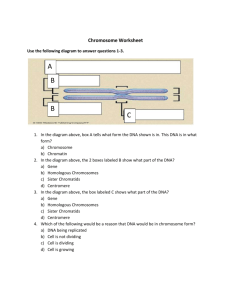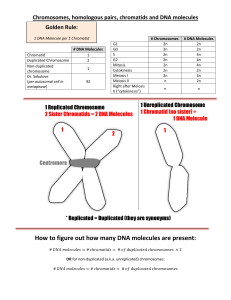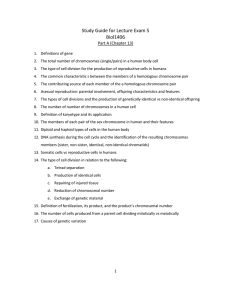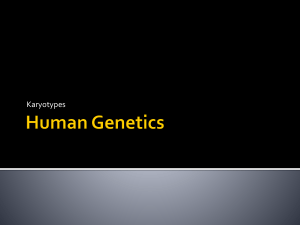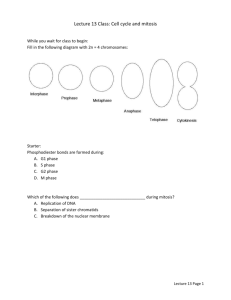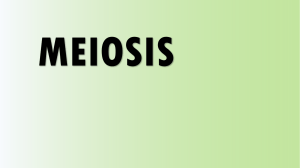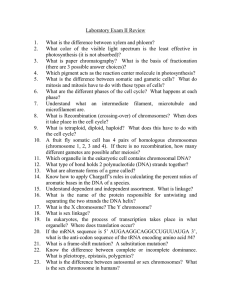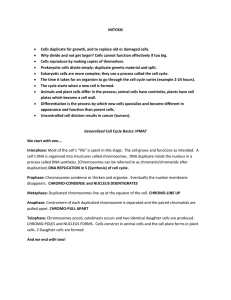BIOL 110 Week 8 KEY 1. Write a short definition of
advertisement
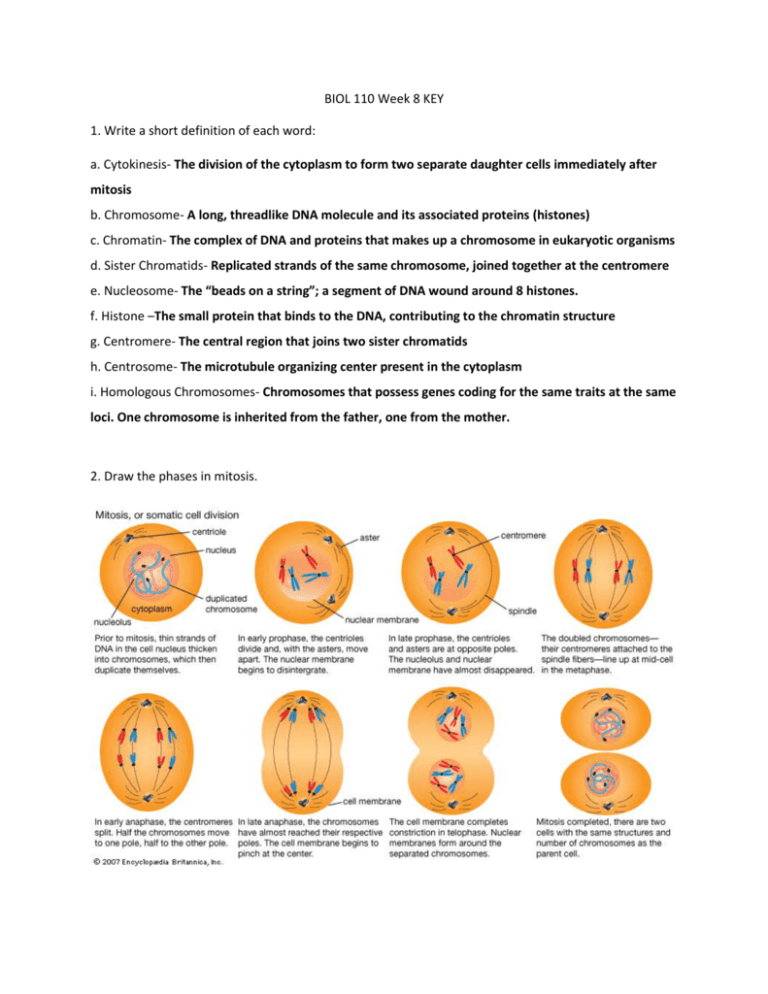
BIOL 110 Week 8 KEY 1. Write a short definition of each word: a. Cytokinesis- The division of the cytoplasm to form two separate daughter cells immediately after mitosis b. Chromosome- A long, threadlike DNA molecule and its associated proteins (histones) c. Chromatin- The complex of DNA and proteins that makes up a chromosome in eukaryotic organisms d. Sister Chromatids- Replicated strands of the same chromosome, joined together at the centromere e. Nucleosome- The “beads on a string”; a segment of DNA wound around 8 histones. f. Histone –The small protein that binds to the DNA, contributing to the chromatin structure g. Centromere- The central region that joins two sister chromatids h. Centrosome- The microtubule organizing center present in the cytoplasm i. Homologous Chromosomes- Chromosomes that possess genes coding for the same traits at the same loci. One chromosome is inherited from the father, one from the mother. 2. Draw the phases in mitosis. 3. Explain the role of cyclin and cdk in the control of the cell cycle. 4. Draw the phases of meiosis. 5. Explain the three sources of genetic variability. The three sources of genetic variability are independent assortment, crossing over, and random fertilization. Independent assortment is the random organization of homologous chromosomes during metaphase I of meiosis. Crossing over is the recombination of genetic information from the criss-crossing of sister chromatids on homologous chromosomes. Essentially, the chromosomes trade segments of themselves. Random fertilization means that out of the many sperm cells and eggs produced, it is completely random which two combine to form a zygote. 6. C 7. A 8. C 9. D 10. D 11. D 12. B
